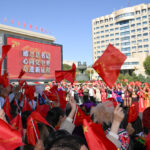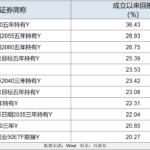Behind the sale controversy lies the ongoing performance pressure that Puma has faced in recent years.
After the German sportswear brand Puma SE saw its market value shrink by about half over the past year, media reports indicated that the Pinault family, one of its major shareholders, has begun contacting potential buyers and may be pushing for a sale.
The Pinault family actually holds about 29% of Puma’s shares. Reports show that the family has held preliminary talks not only with several sportswear companies, including Anta Sports and Li-Ning, but also with Middle Eastern sovereign wealth funds.
“Foreign families have gone through several generations, and their operational drive has weakened,” said an independent fashion industry analyst. “For them, it’s not necessary to operate the brand themselves—cashing out is more the norm.”
After news of the potential sale emerged, Puma’s stock price surged by 20% in the German market, with its market value rebounding to around €3.2 billion, reflecting market anticipation of a possible deal.
However, Puma did not respond to the news. In contrast, both Anta and Li-Ning issued statements. While Anta said, “We do not comment on market rumors,” Li-Ning was more direct in its refusal, reiterating its core strategy of “single brand, multiple categories, multiple channels” and emphasizing its current focus on the growth and development of the Li-Ning brand.
Performance Challenges
Behind the sale controversy is the persistent performance pressure Puma has faced in recent years.
According to its preliminary first-half 2025 financial report, Puma’s sales fell by 4.8% year-on-year to €4.018 billion, or a 1.0% decline after currency adjustment. In the second quarter alone, sales dropped by 2.0% on a currency-adjusted basis to €1.942 billion.
During the second quarter, sales in North America fell by 9.1%, Europe by 3.9%, and Greater China by 3.9%. Slower-than-expected growth in these key markets impacted Puma’s sales and profitability.
In response, Puma expects lower sales performance to continue into the second half of the fiscal year, leading to increased inventory levels. The newly appointed CEO, Andreas Hubert, who took office in early July, acknowledged internal issues during an earnings call and stated that the company would undertake a comprehensive brand transformation starting with its product offerings.
At the same time, Puma cited multiple challenges, including new U.S. tariff policies, high inventory pressure, retail channel restructuring, and a global slowdown in sports consumption. The U.S. tariff hikes alone are expected to result in approximately €80 million in gross profit losses, becoming a critical factor affecting profitability.
Correspondingly, the financial report shows that in the second quarter of 2025, Puma’s adjusted EBIT loss (excluding one-time costs) was €13.2 million, with a net loss of €247 million for the quarter.
Furthermore, Puma has officially downgraded its full-year 2025 guidance, now expecting a low double-digit percentage decline in sales, shattering earlier expectations of low to mid-single-digit growth. The outlook for profits is even more pessimistic, with the company anticipating an operating loss for the year, compared to previous projections of €445–525 million in profit.
In fact, Puma’s performance pressure did not emerge overnight. In 2024, full-year revenue increased by 4.4% to €8.817 billion, but net profit fell by 7.6% to €282 million. At the time, then-CEO Arne Freundt stated, “Despite these successes, I am not satisfied with the stagnant profitability. We must address current cost trends and take decisive action to improve the situation.”
To tackle these challenges, Puma launched the “Nextlevel” efficiency plan as early as February, which included cutting 500 jobs globally, closing unprofitable stores, and increasing investment in high-performance products. In July, the company also underwent leadership changes, appointing Andreas Hubert, a veteran executive with 20 years of experience at Adidas, as Chief Operating Officer, in an attempt to boost operational efficiency through personnel adjustments.
Market Challenges
In addition to internal performance pressure, intensified external market competition has put Puma in a more passive position.
“Puma is stuck in a dilemma—it’s neither high-end nor affordable enough,” analyzed an industry expert. “Adidas and Nike entered China earlier and have first-mover advantages. Puma lacks a differentiated strategy to stand out. Compared to Anta and Li


